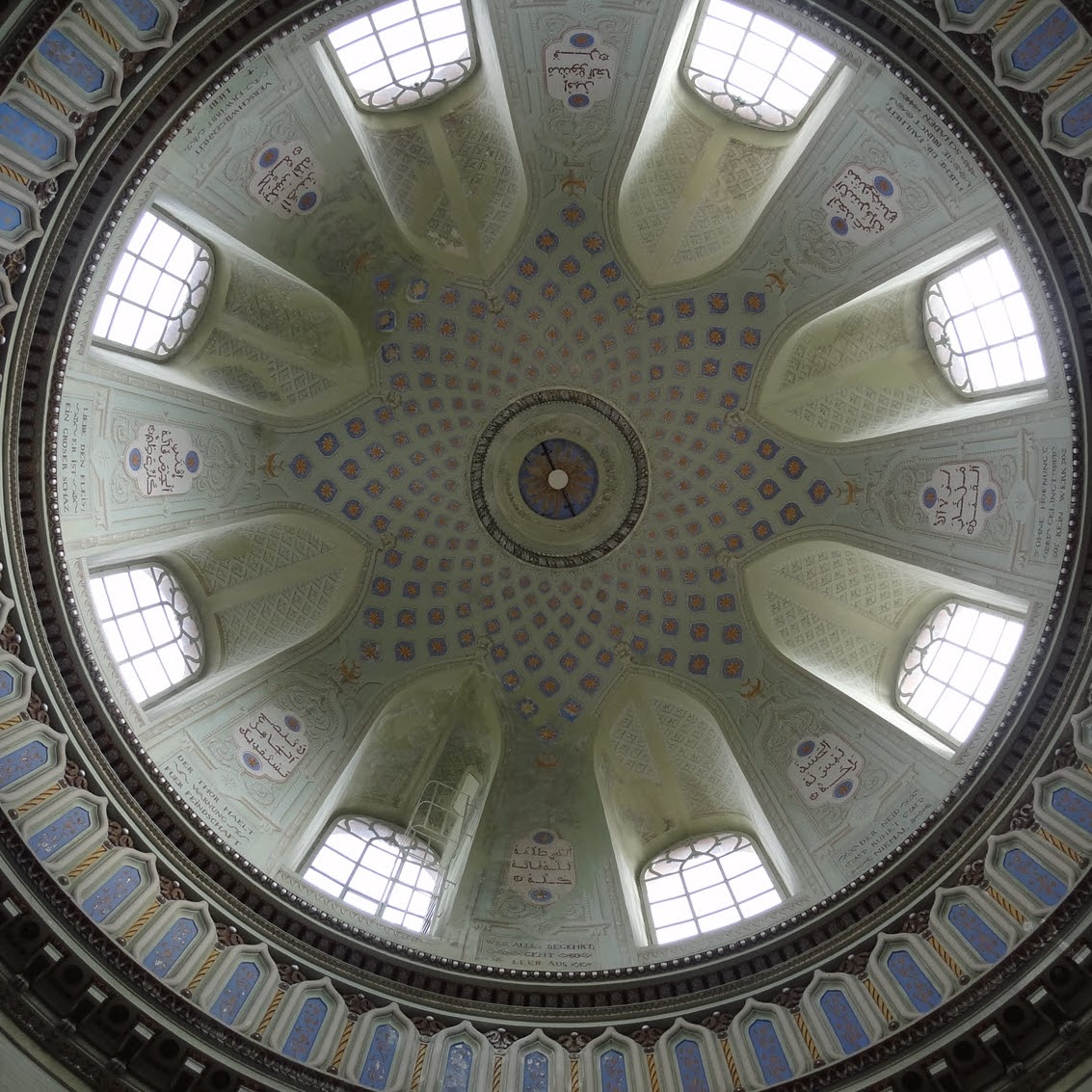We reached the castle (around an hour's drive from Heidelberg) around 5 in the evening. We were told that the evening tickets are for minimal prices but would just let you in the garden, not the castle. We later found out that the interiors are not the highlight of the place at all. Moreover, the gardens have enough to keep you occupied for the day, or you could just take a quiet stroll with the music of the birds lingering in the air.
Schwetzingen was the summer residence of the Electors Palatine Karl III Philip and Charles Theodore. This hunting lodge was transformed into a luxurious summer residence with elaborate gardens. It was originally built around 1350, but the alterations as we see them now began around 1697.
There are numerous sections of the garden - from the Turkish gardens with a mosque (for decorative purposes only), to a bath house, and an aviary just to name a few. Many statues and water fountains dot the magnificent garden and there is even a hedge maze for those who don't mind getting lost.
Nicolas de Pigage built the mosque with its central building, the two minarets and prayer courses in 1779. The interior of the mosque consists of a circular central space, which is divided by columns and niches. Inscriptions in Arabic and German language refer to virtues such as wisdom, diligence and discretion. All Arab texts have errors in the dotting of the consonants and the vocalization - a failure of the German mason. It is testimony to the then prevailing interest in the Arab world. It was not built for the purpose of religion but as evidence of tolerance of the enlightened owner Carl Theodor.
Pigage proposed to build the Temple of Mercury in the form of a romantic ruin, as a counterpart to the mosque.Construction began in 1784 - the latest structure in the Schwetzingen palace gardens. Like all other buildings, the Temple of Mercury has multiple meanings: it is a temple, but as a ruin is also reminiscent of a grave, reminding us of the transient nature of life.
The gardens are dotted with sculptures depicting various themes, from hunting to figures from mythology. Around 86 figures from sandstone, marble or lead have been preserved within the grounds.


The hunting of stags is the theme of the great figures of deer fountain basins in the garden. Artist Peter Anton von Verschaffelt created the powerful figures as a reminder of the origins of the castle. The ones in the garden are only copies though. The originals are kept inside the castle in the Orangerie.
There's a cafe near the entrance but it closes early, so bring plenty of water and some snacks if you plan to stay for a while. Stay off the grass as a general rule and take plenty of breaks on the many benches, even if just to admire the surroundings.
We spent around 3 hours here and hadn't covered even half the grounds.It is easy to lose track of time here.
Schwetzingen was the summer residence of the Electors Palatine Karl III Philip and Charles Theodore. This hunting lodge was transformed into a luxurious summer residence with elaborate gardens. It was originally built around 1350, but the alterations as we see them now began around 1697.
There are numerous sections of the garden - from the Turkish gardens with a mosque (for decorative purposes only), to a bath house, and an aviary just to name a few. Many statues and water fountains dot the magnificent garden and there is even a hedge maze for those who don't mind getting lost.
Nicolas de Pigage built the mosque with its central building, the two minarets and prayer courses in 1779. The interior of the mosque consists of a circular central space, which is divided by columns and niches. Inscriptions in Arabic and German language refer to virtues such as wisdom, diligence and discretion. All Arab texts have errors in the dotting of the consonants and the vocalization - a failure of the German mason. It is testimony to the then prevailing interest in the Arab world. It was not built for the purpose of religion but as evidence of tolerance of the enlightened owner Carl Theodor.
Pigage proposed to build the Temple of Mercury in the form of a romantic ruin, as a counterpart to the mosque.Construction began in 1784 - the latest structure in the Schwetzingen palace gardens. Like all other buildings, the Temple of Mercury has multiple meanings: it is a temple, but as a ruin is also reminiscent of a grave, reminding us of the transient nature of life.
The gardens are dotted with sculptures depicting various themes, from hunting to figures from mythology. Around 86 figures from sandstone, marble or lead have been preserved within the grounds.


The hunting of stags is the theme of the great figures of deer fountain basins in the garden. Artist Peter Anton von Verschaffelt created the powerful figures as a reminder of the origins of the castle. The ones in the garden are only copies though. The originals are kept inside the castle in the Orangerie.
There's a cafe near the entrance but it closes early, so bring plenty of water and some snacks if you plan to stay for a while. Stay off the grass as a general rule and take plenty of breaks on the many benches, even if just to admire the surroundings.
We spent around 3 hours here and hadn't covered even half the grounds.It is easy to lose track of time here.
 |
| Danube River God by Peter Anton von Verschaffelt. |















No comments:
Post a Comment